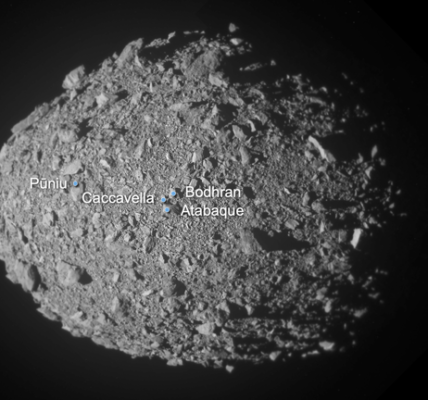Voyager 2 Power Shutdown: 3 Devastating Impacts on Space Exploration
Voyager 2 Power Shutdown marks a crucial moment in space exploration as NASA deactivates one of its science instruments to conserve energy. Learn more about this spacecraft’s mission beyond the heliosphere and how engineers are working to extend its journey into the 2030s.

© JPL-Caltech, NASA
Table of Contents
ToggleVoyager 2 Power Shutdown: A Key Moment in Space Exploration
NASA recently announced the Voyager 2 power shutdown of one of its science instruments as the spacecraft’s energy supply continues to dwindle. Launched over 47 years ago, on August 20, 1977, Voyager 2 has traveled an incredible 12.8 billion miles from Earth. In 2018, it officially crossed the boundary of our solar system into interstellar space, an extraordinary milestone in human history. Now, as the probe ventures even deeper into the “final frontier,” NASA faces tough decisions on how to conserve its remaining power and keep the mission going for as long as possible.
What Is Voyager 2 Doing in Interstellar Space?
The Voyager 2 power shutdown of its plasma science instrument is a part of NASA’s ongoing effort to maximize the spacecraft’s lifespan. The Voyager probes—Voyager 1 and Voyager 2—are the only human-made objects currently exploring interstellar space. This region is beyond the influence of the sun’s magnetic field, known as the heliosphere. These spacecraft are gathering data about the environment beyond our solar system, something no other mission has ever achieved.
Voyager 2, in particular, is still using four of its science instruments to study the conditions in this remote part of space. However, as the power supply continues to decline, NASA needs to shut off certain instruments to keep others running. This ensures that Voyager 2 can keep sending valuable scientific data back to Earth for as long as possible—potentially into the 2030s.
The Importance of the Plasma Science Instrument
The Voyager 2 power shutdown of the plasma science instrument is a significant decision, given the instrument’s key role in the spacecraft’s mission. This device has four “cups” designed to collect data on the amount of plasma—charged particles in space—moving past Voyager 2. Three of these cups were angled toward the sun, gathering data on the solar wind within the heliosphere. The fourth cup was oriented away from the sun to study plasma in planetary magnetic fields and interstellar space.
This plasma science instrument was crucial in detecting Voyager 2’s crossing from the heliosphere into interstellar space. In 2018, the drop-off in solar wind particles recorded by the instrument confirmed that the spacecraft had officially left the solar system. Despite its significance, the instrument had become less useful in recent years. The three cups pointed toward the sun stopped gathering data once Voyager 2 moved beyond the heliosphere, leaving only one cup functional. That single cup provided limited data, and because of the spacecraft’s orientation, it could only collect useful information once every three months when Voyager 2 completed a full 360-degree turn.
Why Did NASA Choose the Plasma Science Instrument?
NASA’s decision to prioritize the Voyager 2 power shutdown of the plasma science instrument over other instruments came down to its limited usefulness in recent years. With only one cup still gathering data, and that data being infrequent, the plasma instrument became less critical than other instruments that are still providing valuable information on a more regular basis.
By shutting down this instrument, NASA aims to conserve the probe’s remaining energy for the other three science instruments still onboard. This careful power management is essential because Voyager 2’s power source, plutonium, decays over time. The spacecraft loses about 4 watts of power each year, so every decision about which instrument to deactivate is critical for extending the mission’s lifespan.
The Power Source: Decaying Plutonium
The Voyager 2 power shutdown is a reminder of the mission’s reliance on a finite power source. Both Voyager 1 and Voyager 2 are powered by Radioisotope Thermoelectric Generators (RTGs), which convert the heat from decaying plutonium into electricity. While this has been a reliable power source for decades, it’s steadily running out. The 4-watt annual power loss means NASA must continuously reassess which instruments can stay active and which must be shut down to keep the spacecraft operational for as long as possible.
In the 1980s, after Voyager 2 completed its close encounters with the outer planets—Jupiter, Saturn, Uranus, and Neptune—several of its instruments were turned off to conserve power. More recently, non-essential systems like cameras and other less-critical instruments were also deactivated. NASA engineers are constantly balancing the spacecraft’s limited resources with the goal of gathering as much scientific data as possible from this unique and distant part of space.
What Comes Next for Voyager 2?
As NASA monitors the spacecraft’s power supply, additional Voyager 2 power shutdown decisions will likely be necessary in the coming years. Engineers believe that at least one science instrument can remain active into the early 2030s, but this means further trade-offs in the near future. With only three active instruments remaining, mission specialists will need to decide which of these will be turned off next to extend the life of the spacecraft.
These decisions are not taken lightly. Voyager 2, along with its twin, Voyager 1, provides the only direct data from interstellar space. Every bit of information sent back to Earth is invaluable for scientists studying the outer reaches of our solar system and beyond. The continued operation of even a single science instrument on Voyager 2 could lead to groundbreaking discoveries in interstellar space.
Voyager 2’s Legacy
The Voyager 2 power shutdown marks another chapter in the incredible legacy of the Voyager mission. When Voyager 2 was launched in 1977, no one could have predicted that it would still be operational nearly five decades later. The spacecraft has already exceeded all expectations, providing humanity with its first close-up views of the outer planets and now delivering insights from beyond the heliosphere.
Even as its instruments are gradually turned off, Voyager 2 remains a symbol of human curiosity and exploration. Its journey into interstellar space represents a leap into the unknown, one that continues to push the boundaries of what we can learn about our universe.
Conclusion: A Future Full of Discovery
Although the Voyager 2 power shutdown of the plasma science instrument is a necessary step to conserve energy, it is far from the end of the mission. As long as Voyager 2 continues to send back data, NASA will make every effort to keep this iconic spacecraft operational. Each new discovery made by Voyager 2 as it drifts further into interstellar space will add to its extraordinary legacy, offering us a glimpse of the vast, uncharted regions beyond our solar system.
In the years ahead, as more instruments are powered down, we can expect to learn even more from this pioneering mission, cementing Voyager 2’s place in the history of space exploration.
Related:
Frozen Stars and Black Holes: 5 Terrifying Truths You Need to Know!



